Dandelions. Love them or hate them, we can all agree on one thing: they’re almost impossible to get rid of. So as a gardener, what do you do? How do you live with dandelions in a way that works for your garden, not against it?
Well, to figure that out, we first need to understand a bit about how dandelions work: how they grow, spread, and reproduce. Once we’ve got that down, it becomes a lot easier to manage them without making them a big worry.
Dandelions: The Early Bloomers That Feed the Bees
One of the main benefits of dandelions is that they’re an early food source for bees and other nectar-loving insects. Usually, they’re one of the very first flowers we see in spring. And being first makes them important, especially when not much else is in bloom yet.
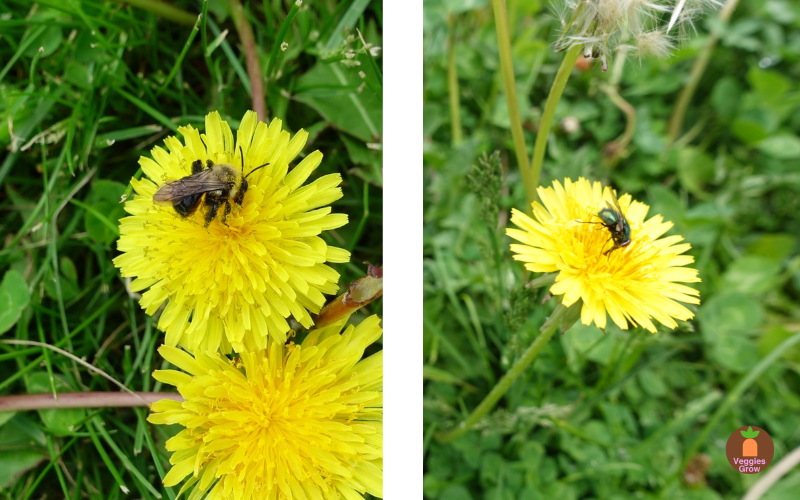
Dandelions are an early food source for bees and other nector-loving insects
Now, if you are in North America it’s true that dandelions aren’t native (they’re native to Europe and Asia) and yes, the pollen of native flowers are the best for native bees in terms of nutrition. But the reality is, in a lot of our yards and city spaces, there just aren’t many native plants around unless you make an effort to grow them.

Dandelions will grow pretty much anywhere they can
So even though dandelions aren’t perfect, they may be the only nectar source around early in the season. That makes them useful, especially if you’re trying to attract pollinators to your garden.
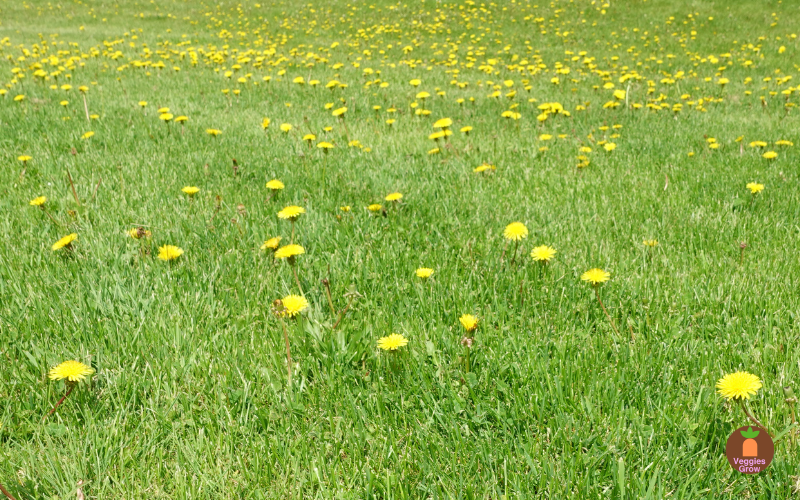
Dandelions are prolific in lawns where not many other flowering plants grow
Why They’re So Hard to Get Rid Of
Dandelions have a very long taproot, and it can go down six to eight inches or even more. And this is exactly why they’re so hard to eliminate. Even if you pull out the plant, if a piece of that root breaks off, it can grow a brand new dandelion.
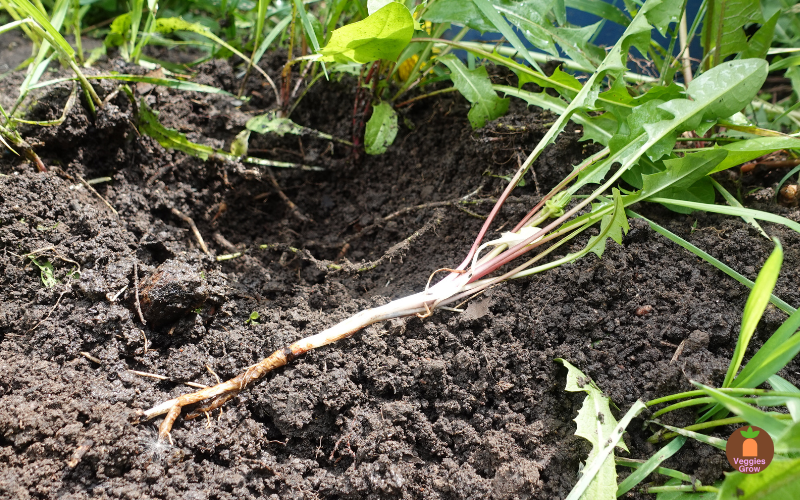
Dandelions have a long tap root that can be six to eight inches or even longer
But here’s the interesting part: that same root is actually doing something useful. It’s breaking up compacted soil, especially after a heavy winter. Dandelions often pop up before you’re planting your veggies, so they’re kind of doing a bit of the prep work for you.
And because they reach so deep, their roots can pull up nutrients trapped down in the lower soil layers, bringing them closer to the surface, where your veggies will be growing later.
A Natural Cover for Your Soil
Dandelions also spread low to the ground, covering soil that would otherwise be left bare. That’s helpful, especially in early spring. It protects the soil from drying out or cracking when the weather changes quickly.
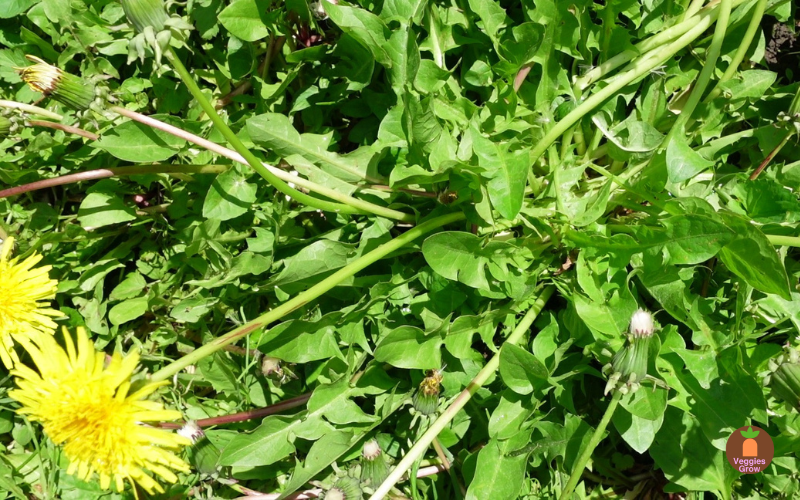
Dandelion plants create a ground cover that protects the soil
Plus, if your soil is in good shape, you’ll usually find earthworms, millipedes, and other little soil helpers hanging out around dandelion roots. All signs of a healthy garden.
So really, there are some good reasons to let dandelions grow, for a little while, at least, before your summer garden kicks in.
When It’s Time to Remove Them
So, when do you start removing dandelions?
First, keep in mind: just pulling them out isn’t enough. They’ll come back from the tiniest bit of root.
Also, dandelion flowers go through phases. When they’re bright yellow, that’s when the bees are visiting. That’s the stage you want. But after that, they close up again, and that’s when the seed head or those little white fluff balls starts to form.
Here’s the trick: remove the flower after it closes, but before it opens up into that white puff. You’ll see it looking kind of like a bud, with a white brushy texture inside. That’s the moment. Pull the stalk off right then. If you wait until the seeds open, you’ll just end up spreading them around.
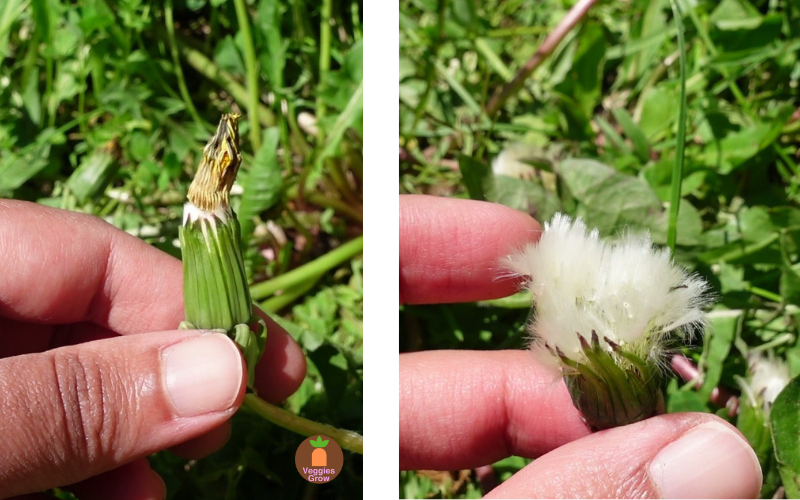
Remove dandelion flowers after they have bloomed and closed up resembling a bud with a white brushy texture and before they open up into a white puff ball
It’s too late once the seed heads have formed. The seeds are small and oval shaped with a small propelor-like top that carries them with the wind. Just a slight knock or gust of wind and you’ll have hundreds of seeds all over your garden.
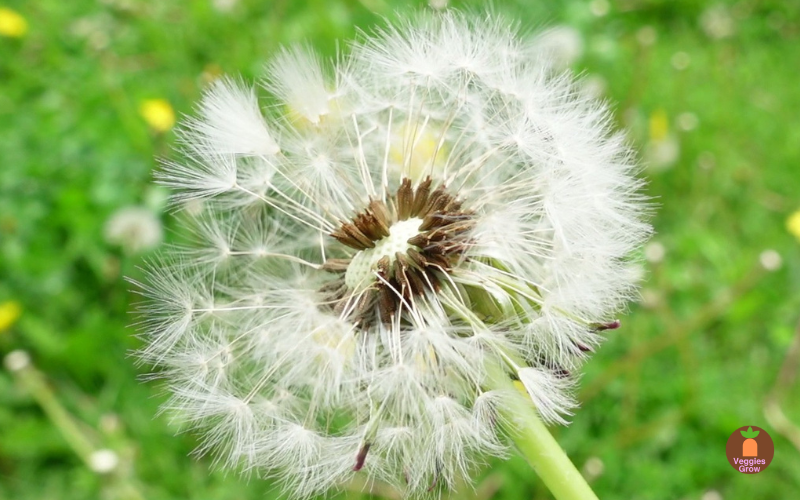
Dandelion seeds on a seed head
The Best Way to Remove Them
You’ll want to remove the entire plant if they are growing in your vegetable beds itself. I don’t recommend using pesticides or chemicals, especially if you’re growing food in that soil or near it. And often, they don’t even work that well on dandelions.
The best way? Mechanical removal. Dig them out with a tool that can go deep enough to get the taproot. There are special weeding tools made just for dandelions—some long-handled, if you don’t want to bend over, and some handheld if you like or dont mind getting your hands dirty!.
Final Thoughts
So, should you keep dandelions in your garden?
Well, maybe not all season…. but in early spring, they have their place. They help feed pollinators, improve your soil, and protect your garden beds while you’re still getting things ready.
Then, when the time is right (i.e. before the seeds spread) you step in and manage them. It’s about balance.
Let your dandelions work for you in spring. Then, with a proper timing and a good weeding tool, you can keep them from taking over.

